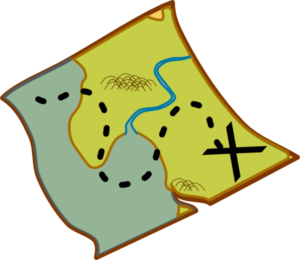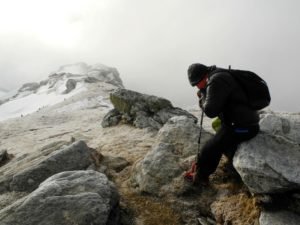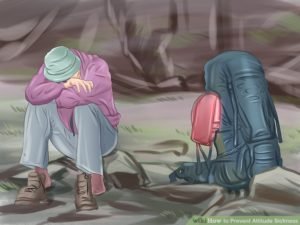5 Important Trekking Tips Every Regular Trekker Should Follow

Nature is as challenging as it is beauteous, and the highlands even more so. A trek or a hike often presents steep inclines, dense woods, running streams which need to be crossed by rickety wooden bridges. While in the wild, it is imperative to look out for oneself first because out there, you are on your own. The landscape is unforgiving. Therefore, to make your trek an experience which brings a surge of exhilaration every time you look back upon it, a few trekking tips must be kept in mind.
1. Do not underestimate a route:
This is in tandem with the age old adage, ‘Better safe than sorry.’ A short hike of a couple of hours from one village in Himachal Pradesh to another may seem relatively easy in the words of a friend. But chances are, that a 1500 feet elevation will seem like 6000 feet while you are trekking because the path is never uniform. You will find yourself feeling like your lungs are outside of your body before you know it.
The best thing to do in this situation is to pause. Take a breather for a couple of minutes, the mountains are not running away. Before embarking, prep yourself for steep inclines, albeit for a very short distance, gravelly paths where you may lose balance or have a misstep, and short but swift rivulets with terrific currents. Rain being unpredictable in the Himalayas, you may also find the ground to be mucky which adds to the difficulty of walking.
To a smart traveller, information from locals are the words of a prophet. Porters, shepherds, farmers will know more than the Internet or guide books can ever tell you. Listen to them, make a mental note, and only then hit the road.
2. If You Veer Off-Route:
A common emergency, sometimes arising even for the most seasoned of trekkers. Douglas Adams has shown you the way; he says: Don’t Panic. Panicking only leads to more anxiety, and never to the destination. One way to avoid this situation is to again, make sure of the way just before starting off on the trek, from a local. Trekking with a local, if not a guide or in groups, is always a smart move. Keep a lookout for shepherd trails, there are many to be found even on otherwise unfrequented routes.
Prior to the trek, leave behind a detailed trek plan consisting of the place of departure, the destination, route, important halts if any, expected duration of trekking, medical conditions if any, and important contacts/radio frequencies. This is in case you do get lost, someone will have an idea where to look.
Stick to ways that resemble a path. Bushwhacking is not the way to go in the mountains. If possible, leave behind a trail so that you can trace your way back. It will also provide psychological comfort to know that even if you are not on the way to the destination, you’re on a road you’ve taken before.
Lastly, it is always advisable to wear layered clothing because in case you need to spend the night alone in an unknown location, clothes become the primary means of protection and warmth.
3. Extreme fatigue and physical injuries:
Sometimes, fatigue can be paralysing. Research thoroughly about the route well in advance so that you know what you’re about to begin, and make sure it meets your physical and mental capabilities. Do not overexert yourself. Even then, one can never be cent per cent prepared for a trek, especially a high-altitude one. Take a break every hour or more often, to recharge your energy levels. Continuous trekking takes a toll on your health, speed of walking, and most importantly, balance. Postpone or shorten your trek if fatigue does not permit. It takes more steadiness to trek downhill than trek uphill, so keep in mind the descent.
Take only sips of water when you need to, and not big gulps. It often leads to pain in the stomach which is a most undesirable condition on a trek.
Sprains, twists, and bruises due to rock or slippery snow formations are the most common injuries on a Himalayan trek and can be easily dealt with using sprays (e.g. Volini), and band-aids. As a trekker, one must be aware that it could take a day or two for proper medical help to arrive in the mountains.
4. Acute Mountain Sickness:
Acute Mountain Sickness, or AMS, also called Altitude Sickness is a self-diagnosable and self-treatable condition that often afflicts trekkers on high altitude treks, usually above 7500-8000 feet. It is caused due to reduced levels of oxygen and drops in air pressure as one climbs higher. The faster the trek, more the chances one has of getting AMS. Therefore, trek gradually, and after having crossed 7000 feet, take ample rest (for half or one day) to get acclimatised to the weather. It is also wise to not strain yourself on a climb in any way.
AMS induces dizziness, fatigue, nausea, mild to a severe headache, breathlessness, and rapid heart beat. Severe AMS can also cause coughing up blood, cyanosis, chest congestion, pale complexion and decreased consciousness.
The first thing to do in this situation is to stop trekking. It is imperative that one takes rest and gradually descends to lower altitude as and when possible. Diamox is taken to reduce shortness of breath. In the case of severe AMS, oxygen is to be provided and hence one must carry oxygen tanks on high-altitude treks.
AMS is easily treatable if its symptoms are recognised early on. The rate of response varies from individual to individual but care must be taken to not delay the descent.
5. Encounters With Wild Animals:
Technically, you are trespassing on their territory, so it only makes sense to give them fair warning that an outsider is on their grounds. Kicking the occasional pebble or speaking will do the trick. Watch out for snakes, and poisonous spiders and lizards. Using a repellent and dressing appropriately is good ways to protect oneself.
Mostly, wild animals avoid human contact as much as possible. It is unwise to approach them as they feel threatened and retaliate in self-defence. In case you come face to face with a dangerous animal, do not provoke it in any way, maintain eye contact, stand still, and gradually try to walk away without turning back.
Needless to say, nothing commands more common sense and alertness than the open road does. Every adventure requires the minimum amount of planning, and when you’re surrounded by majestic lush mountains with glowing snow-capped tops, danger seems to be a thing of oblivion. However, trekking poses threats even to the best of us. Keep a torch/flashlight and an emergency whistle handy at all times. It is an enjoyable activity which has the potential to be a life-changing experience with the right precautions. Happy trekking!





